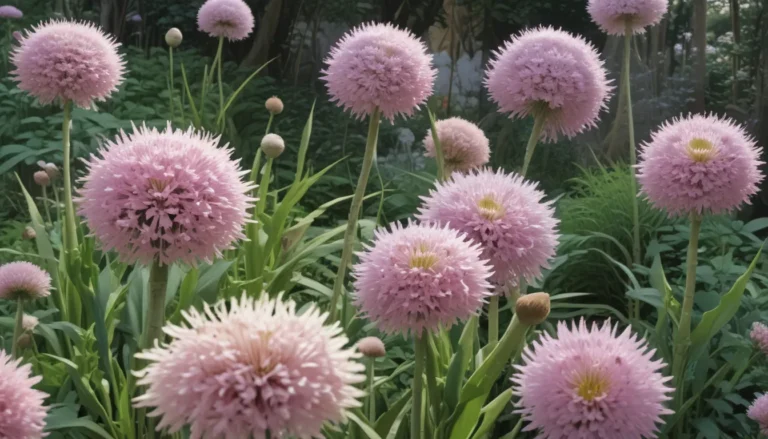Comprehensive Guide on Growing and Caring for Japanese Spirea

As an urban farmer, my focus is typically on food-producing plants. However, when it comes to ornamentals, I gravitate towards low-maintenance options that can survive a bit of neglect. That’s where Japanese spirea, also known as Spiraea japonica, comes in. This shrub is forgiving, resilient, and easy to care for, making it a perfect choice for those who might not be able to dedicate all their time to garden maintenance.
What Is Japanese Spirea?
Japanese spirea, S. japonica, is a deciduous flowering shrub native to Japan and China that has become a garden favorite in North America. This plant, a member of the Spiraea genus within the Rosaceae family, is also referred to as Japanese meadowsweet. Its unique characteristics include a dense, mounded form with thin, wiry stems and lush green leaves that change color with the seasons. Blooming in early summer with white, pink, or purple flowers, Japanese spirea attracts butterflies and other pollinators.
Cultivation and History
Introduced to the United States in the late 19th century, Japanese spirea quickly gained popularity for its hardiness and adaptability. However, its invasive nature in some regions has raised concerns about its impact on native flora. To address this issue, consider choosing sterile cultivars like ‘Crispa,’ ‘Dart’s Red,’ ‘Neon Flash,’ and those in the Double Play® series to prevent the spread of this plant.
Japanese Spirea Propagation
While Japanese spirea reproduces easily in the wild, propagating from seeds collected from hybrids or cultivated varieties may not always yield true results. Instead, consider methods like softwood cuttings, hardwood cuttings, layering, or division in the spring or fall to create new plants. For a quick and reliable option, purchase a potted Japanese spirea plant from a reputable grower.
Transplanting
When transplanting Japanese spirea, ensure to provide sufficient space for its spreading growth habit. Prepare the planting hole with organic material like compost or well-rotted manure to give the shrub a healthy start. Water deeply and mulch around the base of the plant to retain moisture and suppress weeds.
How to Grow Japanese Spirea
Japanese spirea is relatively low-maintenance and adaptable to various soil and light conditions. It thrives in moist, well-drained soils but can tolerate dry sites and slightly alkaline pH levels. Fertilize sparingly with a balanced, slow-release fertilizer in early spring, and water deeply while allowing the topsoil to dry out between waterings. Remember to adjust watering during winter dormancy to prevent root damage.
Growing Tips
- Choose a location with full sun to part shade.
- Plant in well-draining soil.
- Fertilize sparingly in spring with well-rotted manure or a balanced, slow-release fertilizer.
- Water when the soil is dry two inches down and be careful not to overwater.
Pruning and Maintenance
Regular pruning in late winter or early spring helps control the size and shape of Japanese spirea while encouraging colorful new growth. Deadhead spent flowers and remove dead or damaged branches to maintain a healthy plant. Mulching around the base of the shrub helps retain moisture and suppress weed growth.
Japanese Spirea Cultivars to Select
When selecting Japanese spirea cultivars, consider sterile options like ‘Crispa,’ ‘Dart’s Red,’ ‘Neon Flash,’ or those in the Double Play® series to prevent invasive spread. Each cultivar offers unique characteristics like colorful foliage, compact growth habits, and vibrant flower displays, adding personality and charm to your garden design.
Managing Pests and Disease
While Japanese spirea is relatively pest and disease-resistant, occasional issues like aphids, leaf rollers, scale, gray mold, fireblight, powdery mildew, root rot, and verticillium wilt can occur. Implement holistic practices such as proper hygiene, watering, and biodiversity to prevent and manage pests and diseases. Physical and biological controls, along with targeted treatments, can help address specific issues.
Best Uses for Japanese Spirea
Japanese spirea is a versatile shrub that can be used for borders, foundation plantings, hedges, mass plantings, rock gardens, and specimen focal points. Its seasonal changes from spring blooms to fall foliage provide year-round interest, while its intricate branching pattern adds drama to winter landscapes. Embrace the adaptability and beauty of Japanese spirea in your garden design to create a welcoming and vibrant outdoor space.
Conclusion
In conclusion, mastering the art of growing and caring for Japanese spirea involves understanding its unique characteristics, cultivation requirements, propagation methods, cultivar selection, pest and disease management, and practical uses in the garden. By following these comprehensive guidelines, you can cultivate a flourishing and resilient landscape with the charming presence of Japanese spirea. Share your experiences and questions in the comments, and let this versatile shrub become a standout gem in your garden!





